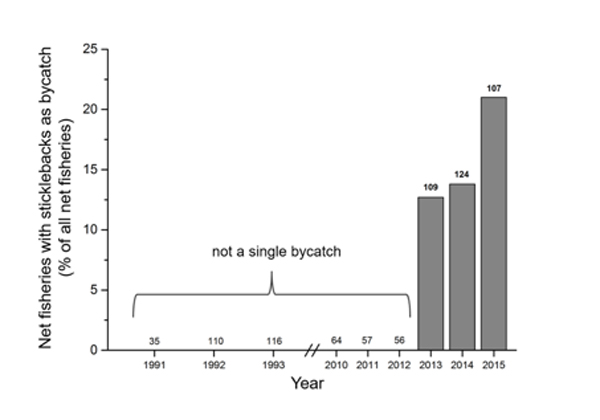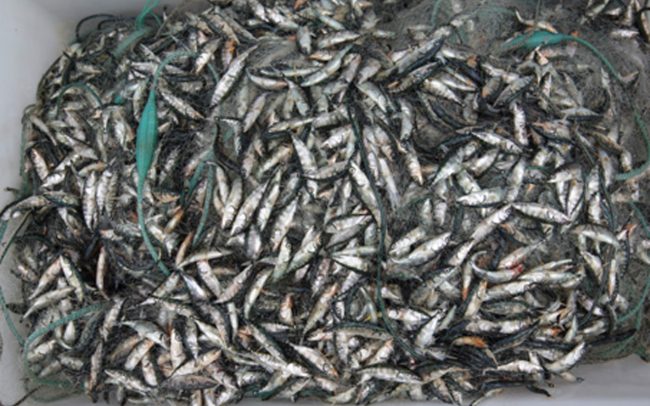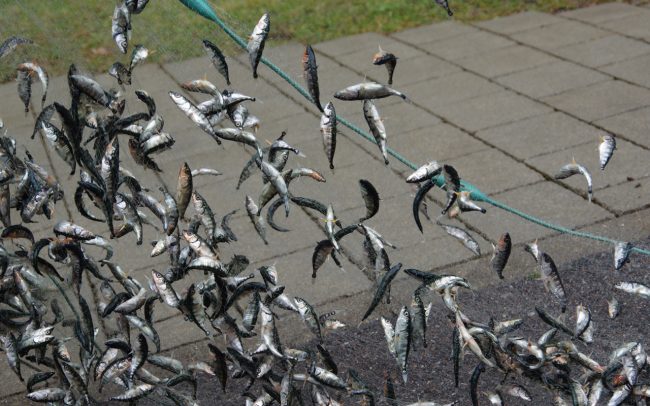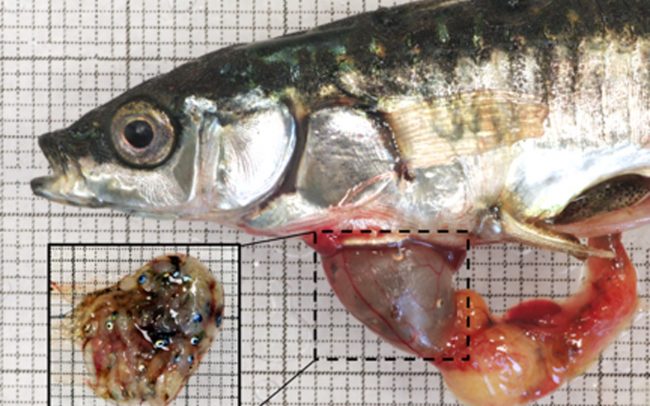
P1: The stickleback in Upper Lake Constance
The massive increase of the non-native three-spined stickleback (Gasterosteus aculeatus) in Lake Constance, as well as the nutrient decline within the course of lake re-oligotrophication, has strong negative effects on the native fish community as well as local fisheries. After more than 50 years of inconspicuous existence, sticklebacks now represent more than 80% of the fish stock in Upper Lake Constance (96% in open water (pelagic zone), the habitat of the originally dominant whitefish). The invasive stickleback is a direct competitor for food, particularly for whitefish. It also feeds on eggs and larvae of other fish species, which might cause recruitment of native fish species to decrease. Such a development displays a unique special case in fisheries biology for a large, nutrient-poor (oligotrophic) lake like Lake Constance. The reasons for the mass occurrence of the three-spined stickleback are unknown.
In this research project, we will investigate the autecology of the three-spined stickleback in Lake Constance. Acoustic surveys with parallel trawl nets, to verify the hydroacoustic data obtained, will be carried out with the aim of distinguishing sticklebacks from other fish species in the lake and, thus, obtaining a reliable stock assessment. We will also conduct gut content analysis of the three-spined stickleback, in order to evaluate niche overlap and potential direct damage by interfering with the recruitment of native fish species. In addition, we will investigate the seasonal infestation with the parasitic tapeworm Schistocephalus solidus. The age of the three-spined stickleback will be determined, to gain insights into the growth of this species in Lake Constance. We will also investigate the possibility of different types of Lake Constance sticklebacks using geometric morphometry (landmarks). Furthermore, targeted fishing (gill and trawl net, electric fishing) in the littoral and pelagic zone will be used to examine the spatial spawning behaviour as well as the habitat overlap, and to estimate abundance.

Percentage of net fisheries with sticklebacks as bycatch. Numbers above the lines and bars represent the total number of net fisheries in the respective year.


In collaboration with
 Dr. Jasminca Behrmann-Godel
Dr. Jasminca Behrmann-Godel
Ministry of Rural Affairs and Consumer Protection Baden-Württemberg, Department 26, Germany

Picture 1 + 2: The massive increase of the non-native three-spined stickleback (Gasterosteus aculeatus) in Lake Constance in 2013/14, as well as the nutrient decline within the course of lake re-oligotrophication, has strong negative effects on the native fish community as well as local fisheries.
Picture 3: A three-spined stickleback, caught in spring during whitefish-stocking. The gut content comprises mainly withefish larvae.

Fisheries Research Station Baden-Württemberg (Fischereiforschungsstelle Baden-Württemberg, FFS) of the Agricultural Centre for Cattle Farming, Grassland Management, Dairy Farming, Game and Fisheries Baden-Württemberg (LAZBW), Germany

Downloads
Scholz B & Gugele S (2018)
Seewandel und RTG – zwei Forschungsprojekte für den Bodensee im globalen Wandel.
Aquakultur- und Fischereiinformationen aus der Fischereiverwaltung (Informationsschrift der Fischereiforschungsstelle, des Fischgesundheitsdienstes und der Fischereibehörden des Landes Baden-Württemberg) Rundbrief 1/2018.







